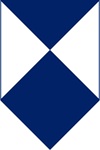The emblem
The emblem of a red cross on a white background is a sign of protection under the Geneva Conventions. It is not a religious symbol.

The red cross, red crescent and red crystal are symbols of protection.
International law protects the people who wear them, and the buildings and transport which display them.
These people aren’t part of a conflict – they’re simply there to help anyone who needs it.
The emblems are not religious symbols.
What is the red cross?
The emblem of a red cross – with arms of equal length on a white background – is one of the most recognised symbols in the world.
What the red cross is not
The red cross emblem is not a first aid or medical sign. It is not a religious or political symbol and it is not a general logo to be used in other ways by organisations or individuals.
What do the emblems mean?
In times of war, the red cross, red crescent and red crystal emblems mean ‘don’t shoot!’. They signify neutrality and protection. To be effective, everyone must understand the emblems' meaning and must have trust in them.
The emblems can also be used to show that a person or object is connected with the International Red Cross and Red Crescent Movement, which includes the British Red Cross. Red Cross and Red Crescent organisations may use these symbols in their logos because of their longstanding role in caring for the sick and wounded during armed conflict.
Origin of the emblems
The red cross emblem was adopted under the original Geneva Convention of 1864. It’s an inversion of the Swiss flag (a white cross on a red background).
This recognises the historic connection between Switzerland and the original Geneva Convention.
The red cross emblem has no intentional religious meaning. However, in the nineteenth century, the symbol reminded soldiers from the Ottoman Empire (modern-day Turkey) of the crusaders of the Middle Ages.
So, since 1876, some countries have used a red crescent emblem in the same way as other countries used the red cross emblem.
On the basis of its use over several decades, the red crescent emblem was formally recognised in the updated Geneva Convention of 1929.
An additional distinctive emblem – the red crystal – was created in 2005 to increase protection in situations where the existing emblems may not be respected. It also helped to promote the universality of the Red Cross and Red Crescent Movement.
So, you may see members of the International Red Cross and Red Crescent Movement in other countries using the red cross, red crescent or red crystal.
Other emblems
There are other emblems used under international humanitarian law, which provide protection to specific people and objects. These include signs used to identify civil defence units or objects whose destruction would release dangerous forces, such as a dam.
There is also an emblem that is used to identify important cultural property.
The cultural emblem

A blue and white shield, also known simply as the 'Blue Shield', is the identifying sign for the protection of cultural property in armed conflict (under the 1954 Hague Convention).
This emblem can be displayed on specified cultural property (for example, museums, monuments, historic buildings, or archaeological sites) to show that it should not be used for military purposes nor be the object of attack.
How you can protect the emblems
We need your help to protect the emblems that protect lives. Misuse of the emblem in armed conflict may amount to a war crime.
Even in peacetime, misuse can lead to misunderstandings and uncertainty. Uncertainty may put people who need protection at risk.
The names ‘Red Cross,’ ‘Red Crescent’ and ‘Red Crystal’ are also protected.
Unauthorised use of the emblems is forbidden in international and national law. The British Red Cross monitors unauthorised use or misuse (deliberate or accidental) of the emblems and similar designs in the UK.
The most common misuses of the red cross emblem are found on commercial packaging, products and advertisements related to health care, first aid and medical materials.
If you suspect misuse of one of the emblems or names, or of similar designs and wording, please let us know. Should you wish to use one of the emblems for any purpose, please contact us beforehand.
For more information, or to report possible misuse of a protective emblem, contact: Michael Meyer, head of international law:
Do you have a question about this page or want to give us feedback? Visit our Contact us page.



